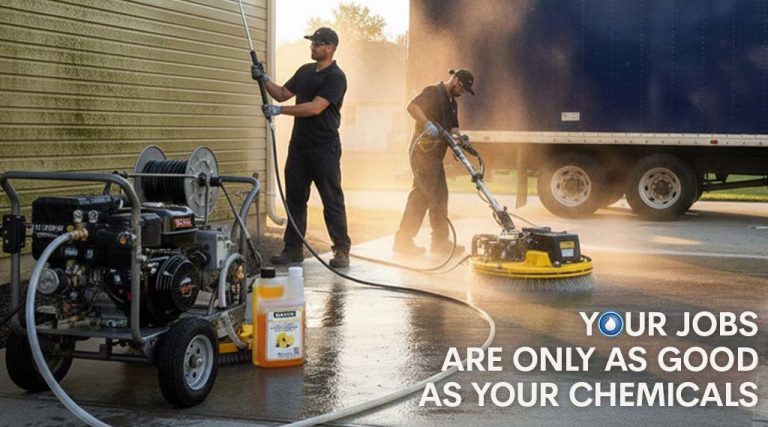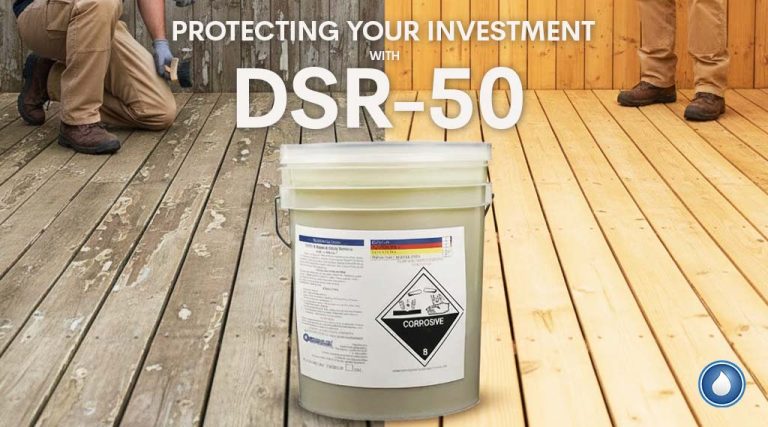- Home
- /
- Power Wash Spray Tips
- /
- What to do if Your Pressure Washer has no pressure!
Subscribe To Our Newsletter
Stay in the know on the latest products, deals, events, tips & tricks.
Social Media
What to do if Your Pressure Washer has no pressure!
Red Alert! What should I do if my pressure washer has no pressure? A sudden pressure drop can be alarming when you depend on your pressure washer to put food on your table. Don’t panic! It may be something that can be corrected quickly.
First, look at your pressure gauge. It should be installed on the head of your pump or as close to the outlet of your pump as possible. Many operators say that they can just “feel” pressure, but a pressure gauge is a more precise and objective measure.
When a pressure washer has no pressure, the natural instinct for most operators is to check the pump or the unloader valve. The classic rookie mistake is to crank the unloader knob down until pressure is restored. The unloader valve is not the correct way to change the pressure output of your machine. Most of the time the pump and unloader valve are not causing the problem. Here are five things to check before you assume the worst.
-
- If your pressure washer has no pressure, start by changing your nozzle to a brand new tip. The nozzle orifice size is what will determine the pressure output of your machine. Nozzles with larger orifices can be used to lower the pressure for cleaning softer surfaces, or applying chemicals. Nozzles can wear as water, chemical, and mineral deposits pass through them. You may notice that the fan pattern is more narrow than the listed number. You can also consult a nozzle chart to determine what the pressure output of a nozzle is supposed to be and compare it to the reading from your pressure gauge. Just as a chef always keeps a sharpened blade, a power washer must always have fresh nozzles on hand. Change your nozzle, and look to see if your pressure has returned. If not, move on to step two.
-
- Remove your nozzle and your downstream injector and run clean water through your system to flush out debris. Watch the water flow to ensure that you have a steady stream. Make sure that the water runs clear. Debris can sometime get into your hoses as they are dragged across the ground, or during storage. If the flow is broken, move on to step three.
-
- If you remove your nozzle and you still don’t have flow, then you may have a problem on the upstream side of your pump. Check your inlet filter to make sure it is clear. Cold water washers typically have a screen filter covering the inlet fitting of the pump. Simply unscrew the garden hose and use your finger to pull out any debris. Check the screen to make sure it is not damaged. Hot water washers may have a can type water filter. This type of filter has a bowl to catch debris. Unscrew the bowl and wash it out. Check the filter for damage. Rinse the filter, and tap it a few times to knock of debris. If you have a float tank, check it to make sure that the lid is secure. Look for debris or corrosion that may be blocking the outlet. Flush your garden hose out before you reconnect it to your system. Then check your water flow again to see if it is steady, put in a nozzle. If your pressure washer has no pressure, move on to step four.
-
- Run water through your machine and look for leaks. Always bring o-rings and PTFE thread seal tape. Check your gun to make sure it is not leaking anywhere. Check hoses for holes or kinks. If everything is sealed up and your pressure washer has no pressure, move to step five.
-
- Check your engine. Is your engine throttle control adjusted correctly? Most engines are designed to run at full throttle. Check your belt if you have a belt drive system. A lose belt will not transfer power properly. The engine could be fine, but the belt might not be turning the pump like it should. It may seem strange to check the engine before you check your pump, but remember that the engine drives the pump. Make sure your engine is running properly.
This is not meant to be comprehensive list. It is the power washer equivalent of turning it off and turning back on again. If these things don’t reestablish pressure and flow, you may have a bigger issue. You still should not panic! Before you reach for your tools, look at your pop-off valve and thermocouple. If your pop-off valve is popped, you may have an issue with your unloader. If your thermocouple is leaking, you may have burnt your packing. Check your pump oil. It should be clear. If it looks milky, you may have put detergent oil in your pump, or you may have water in your oil. Water in your oil may indicate a leak inside your pump. Change your oil immediately. Give our experts a call at 1-800-433-2113 we can help you find the parts you need to get back to work quickly.
Share This Post
More To Explore
Winter Pressure Washing Maintenance Checklist
Winter Pressure Washing Maintenance Checklist Prepared for Contractors by PowerWash.com. Winter is the most important time of year to protect ...
2025 Tax Changes, New Rigs & Easy Payments: What Power Washing Pros Need to Know Before Dec 31
Updated for the latest federal guidelines. PowerWash.com does not provide tax advice. Always consult your CPA. As the year comes ...
Your Jobs Are Only as Good as Your Chemicals: Here Are the Ones That Stand Out
If your busy season has you running from job to job, you already know this: the equipment you use matters, ...
Stripping Wood the Smart Way (Not the Hard Way)
Deep Wood Restoration Made Simple with DSR-50 Whether you’re a professional deck and fence restoration contractor or a homeowner prepping ...




